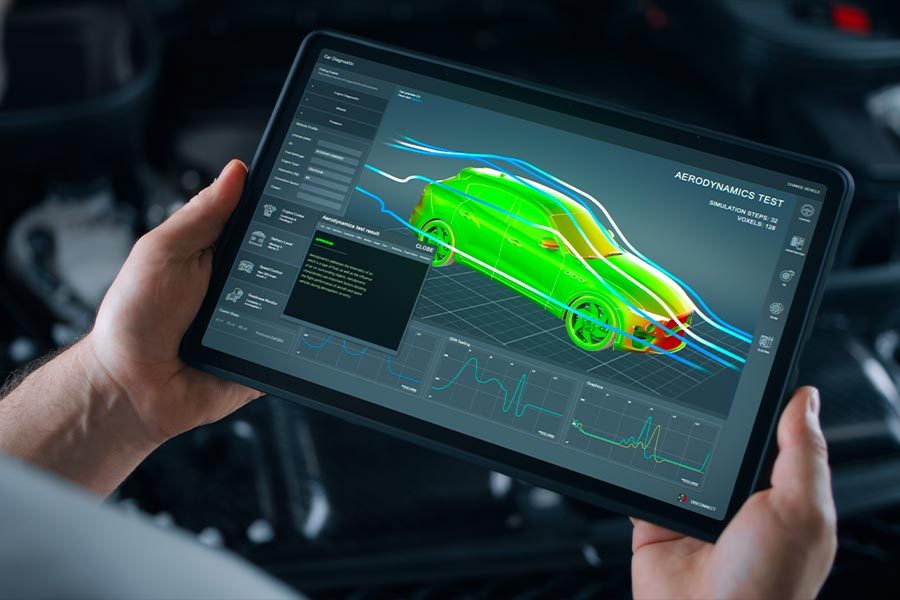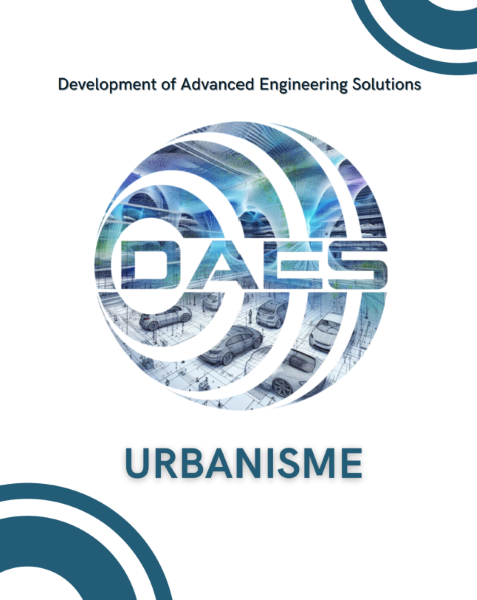Computational Fluid Dynamics
CFD brings together various numerical methods for modeling the flow of fluids such as liquids, gases and other complex substances. It enables the study of specific environments, such as flows around or inside an object, taking into account fluid-structure interactions, heat transfer, thermohydraulics, laminar, turbulent and reactive flows, as well as other phenomena such as microfluidics, viscous flows, liquid metals, electrolytes, two-phase flows, multiphase flows and aerodynamics.
Studying and mastering flows, heat transfers and their associated kinetics are invaluable assets for a project team, whether creating a new process, rethinking an existing system or seeking to optimize it.

Today, CFD is indispensable for optimizing energy consumption, which is more necessary than ever to control costs.
They are widely used to study the behavior of fluids, such as air, water or gases, in real physical systems. Why is CFD an asset for your R&D and innovation projects? Because it allows you to :
CFD simulation can be used to evaluate the performance of different systems, depending on their design, size or shape.
For example, it can be used to evaluate the aerodynamics of a car, the performance of a turbine or wind turbine, or the air friction in a watch case…
For example, it can help optimize the design of an aircraft wing to reduce drag, the design of a pump to improve its efficiency, coupling pumps and spray nozzles…
At every stage of your project, our teams will support you in :
- Define the model: specify boundary conditions and fluid properties, and select the appropriate model type for the system under study.
- Model the geometry so that it is representative of the real situation. This step may involve creating a 3D model of the geometry, or importing an existing model.
- Meshing: this is an important step for simulation accuracy. The mesh must be fine enough to capture the important details of the geometry, but not too fine to avoid long calculation times.
- Define initial and boundary conditions for the model. This can include temperature, pressure, speed, etc.
- Solving the equations : The equations of fluid dynamics are solved numerically to determine the fields of velocity, pressure, temperature and so on.
- Analyze results to understand the behavior of fluids in the system and make appropriate decisions to validate the design, operating procedures, plan and anticipate maintenance operations…
- Check and validate results: to ensure that the simulation is accurate and represents the real situation, and to enrich the model which can then be transferred to your teams. This can include comparing simulation results with experimental data.
The main elements analyzed are :
- Fluid flows: displacement in the system, speeds and directions.
- Pressure: to understand how the fluid interacts with the system’s solid surfaces.
- Temperature: to understand how heat propagates in systems such as enclosures housing electronic components subjected to extreme conditions.
- Turbulence: CFD simulations can also help predict and quantify the effects of turbulence, i.e. chaotic fluid movements.
- Heat exchange: CFD simulations can be used to understand heat exchange between the fluid and the system’s solid surfaces.
There are many CFD (Computational Fluid Dynamics) software packages available, each with its own advantages and disadvantages. Here is a non-exhaustive list of some of the most popular programs:
These tools are the “free” counterparts of the commercial solvers described in the previous section. These open-source software packages require more experience to be used effectively, and enable us to limit licensing costs, modify solvers and carry out heavier calculations.
Allows 0D/1D representation of a loop or a complete system including, but not limited to, hydraulics (flow rates, pressure drops), thermics, control systems, acoustics, etc.
For example, to study heat shields for a fusion plant, to explore strategies for installing compressed air networks, to optimize building ventilation or the operation of a liquid metal reactor.
Examples of projects:
At a time when environmental concerns are playing an increasingly important role in the building industry, CFD offers environmentally-friendly alternatives to traditional mechanical ventilation. By optimizing their ventilation, our simulations enable you to ensure that your parking lots, open-plan offices and other enclosed spaces meet the latest standards and comply with pollutant concentration limits. In this way, we can minimize or even eliminate your need for mechanical ventilation. For example, our engineers can help you validate naturally ventilated parking lots in accordance with SICC VA103-01.
Whether man-made or natural, aerosols are at the heart of many issues: controlling fine particle pollution in the automotive industry, clogging filtration systems or handling powders in the pharmaceutical industry. Thanks to their experience in multiphase CFD, DAES experts will support you throughout the design and implementation of your innovative solutions.
Taking into account the phenomenon of boiling in the development of products subjected to high thermal loads is a complex and varied process, for which our engineers will be able to support you with analytical and numerical studies (CFD, systems) and their concrete applications for your products.
The nuclear industry, and in particular its most modern developments (SMR, ADS, ITER), is a pioneer in the use of liquid metals and molten salts as heat transfer fluids and reaction carriers. DAES engineers draw on the recognized experience of our staff in nuclear innovation and gas pedals (ITER, CERN, ESS, IRSN, PSI) to support you in the complex issues surrounding these corrosive, reactive fluids. We know how to model the complex magnetohydrodynamic flows resulting from the interaction of these conductive liquids with the surrounding magnetic fields.
Hydrogen production as an energy carrier is a highly topical subject, with complex physics at the crossroads of liquid-gas two-phase flow, electrochemistry, thermodynamics and much more. At DAES, our engineers use tools such as CFD and the modeling of complex systems, which, combined with their experience and scientific culture, enable them to develop innovative solutions for the production and use of hydrogen.
A stereotype of hydraulic engineering, and a component of virtually all equipment requiring fluid circulation, turbomachinery such as pumps and turbines are complex systems whose operation depends on a multitude of fluidic phenomena, including turbulence, cavitation and lubrication. Using state-of-the-art numerical methods, our CFD experts will support you in the design and evaluation of your hydraulic systems, and help you optimize their performance.



